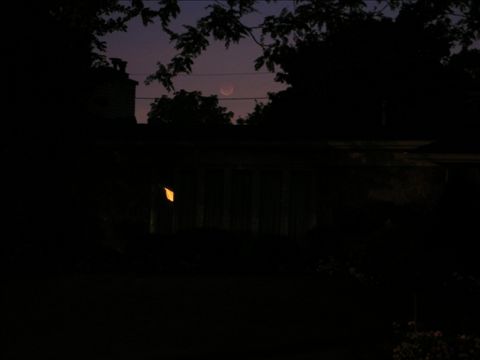I awoke early and packed the car for the trip to Binbrook.
Then i decided to try to observe the eclipse from Burlington.
Starting at about 5 am, the moon was very bright and half obscured by
the Earth’s umbra. With my glasses on it was so bright i got double images
and a lot of glare.
As totality approached, it dimmed nicely until i could view it without
the glare. I forgot that due to the size of the earth, the umbra is large compared to the penumbra. Probably the earth’s penumbra is about as wide as the moon, considering the geometry of a solar eclipse.
I quickly constructed my tripod and put my finder-scope on it,
equipped with a zoom eyepiece. The moon was setting fast behind
the houses and trees.
I was able to view the eclipsing moon clearly as totality approached, and
even managed to snap a few time exposures with my pocket camera.
Alas it came too fast for my DSI so that’s going to have to get first light on another occasion.
I noticed Orion and the M45 overhead, and that the sky was starting to brighten for dawn.
The edge of the moon still illuminated was very bright and sharp,
but it also had a kind of shimmering nature to it, as if the
sharp edge of the moon against the sky was moving just a little,
like the surface of an ocean.
The time scale of the motions seemed to be 1-2 seconds, not the rapid
scintillation i am used to from stars.
The moon faded into low cloud just after totality, and i lost it,
but i did get a good impression of the rapid dimming towards the end.
I was surprised to note that even though it was all within the umbra, parts were still darker in the middle of the umbra. The moon lit by a circular
arc of sunsets from half the world made a nice sight.

